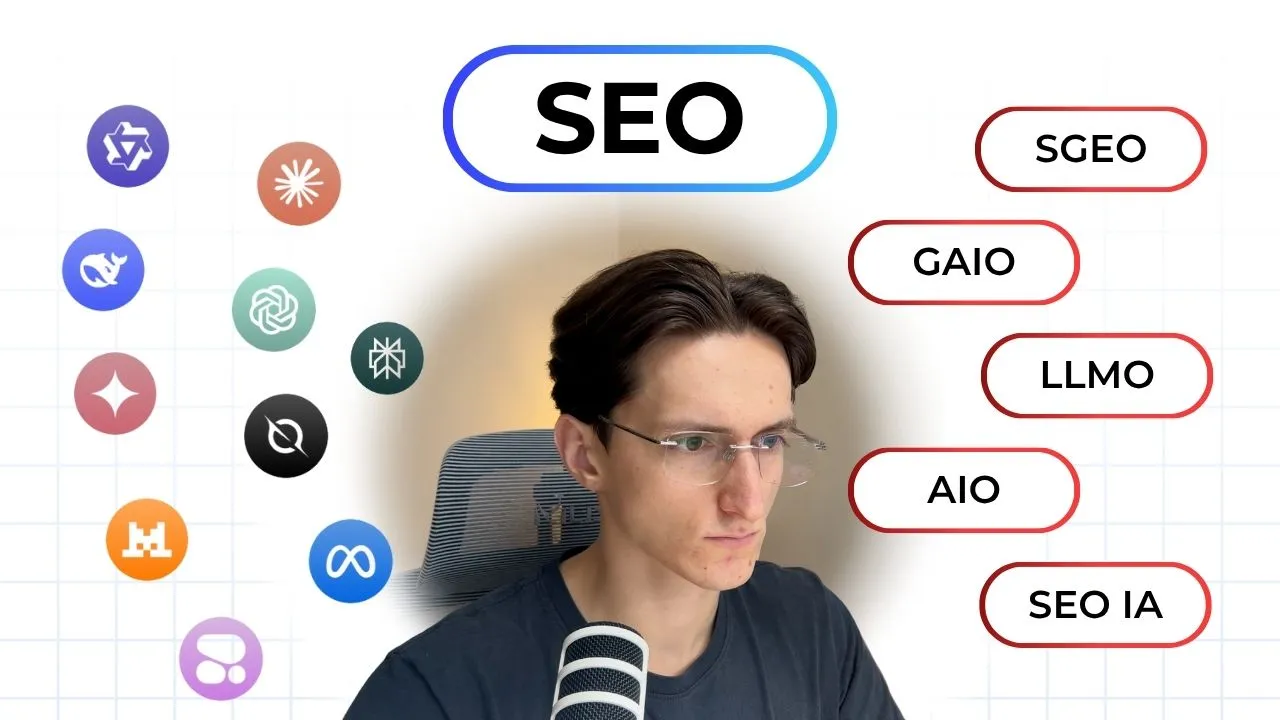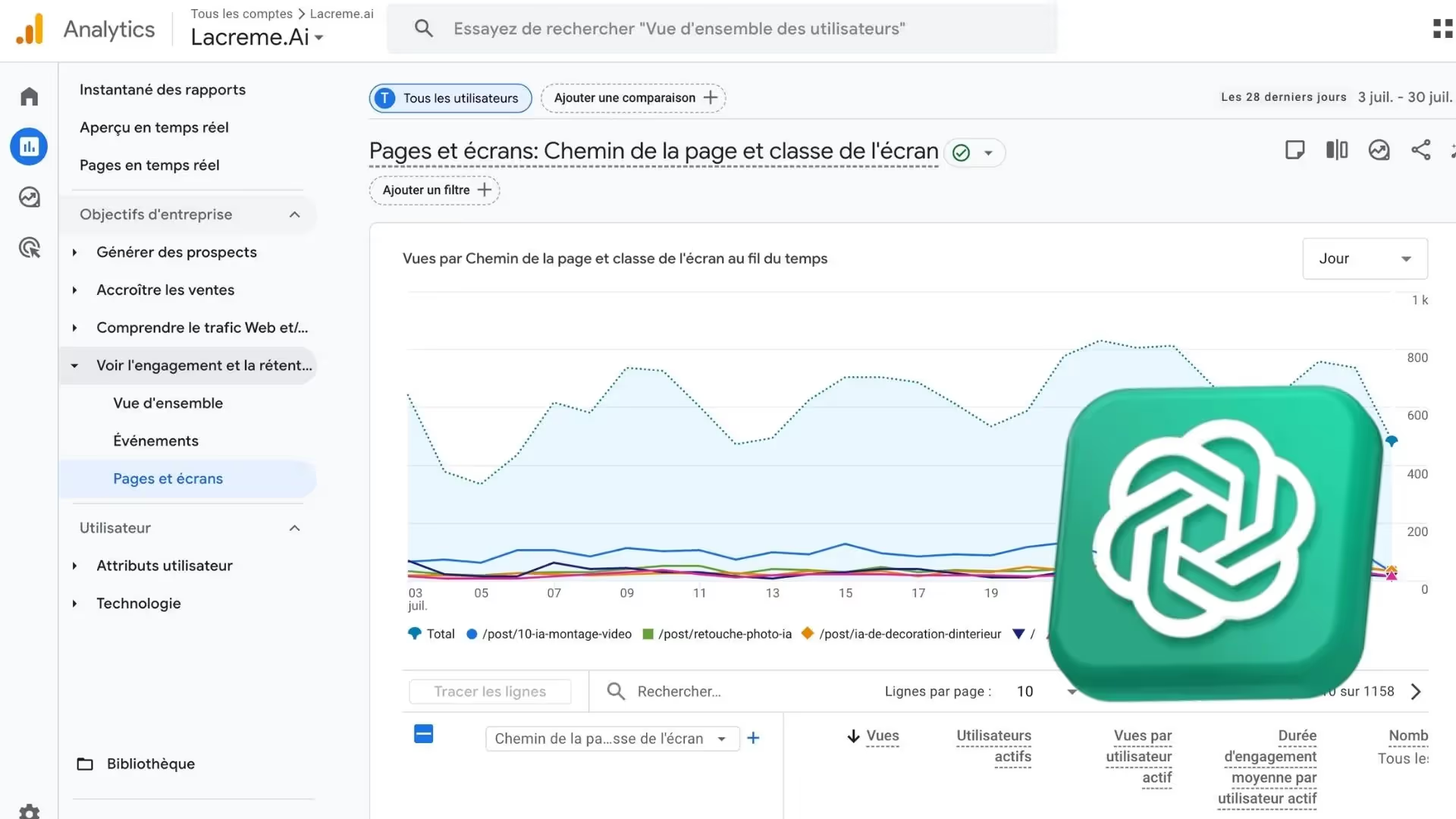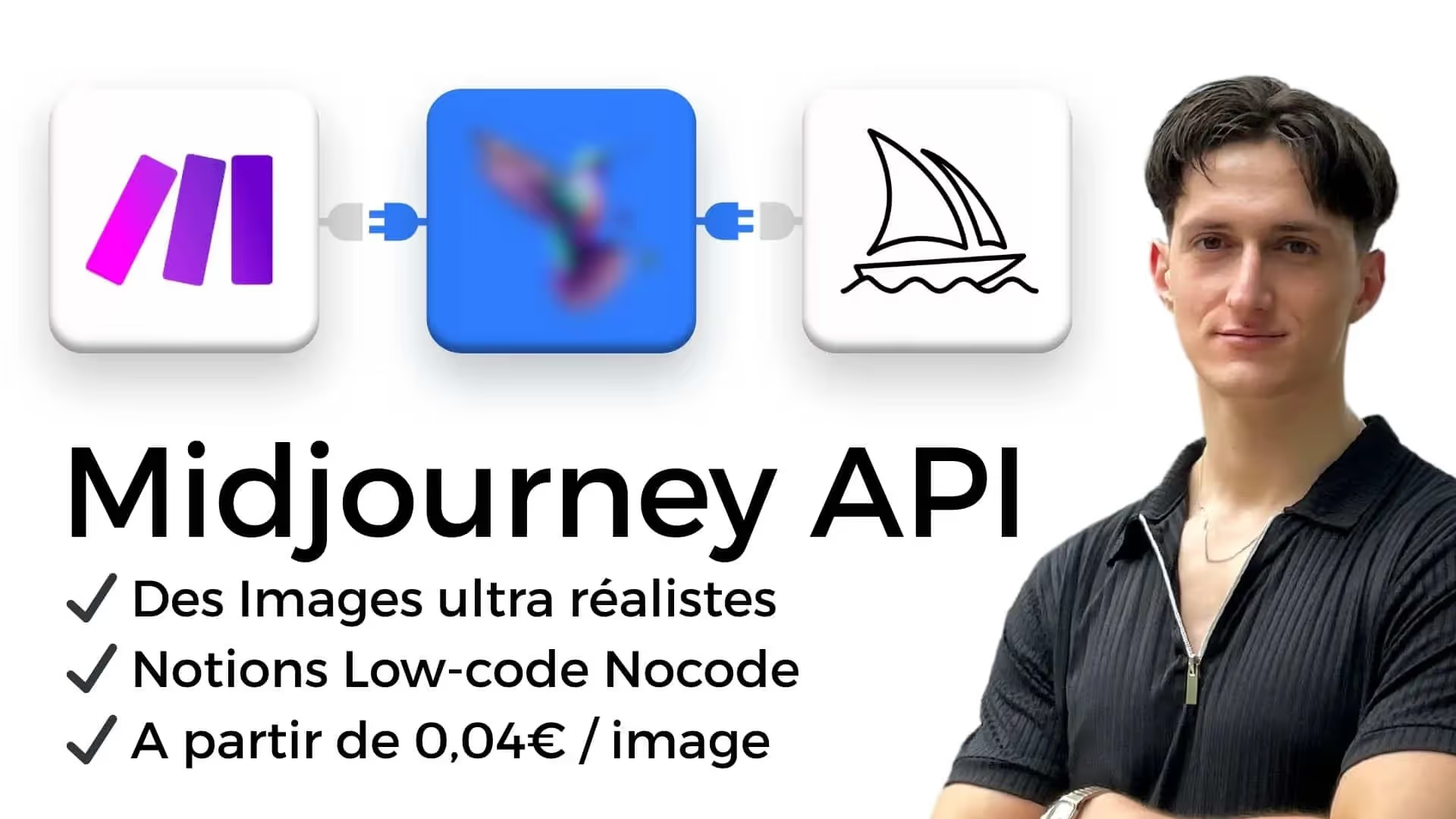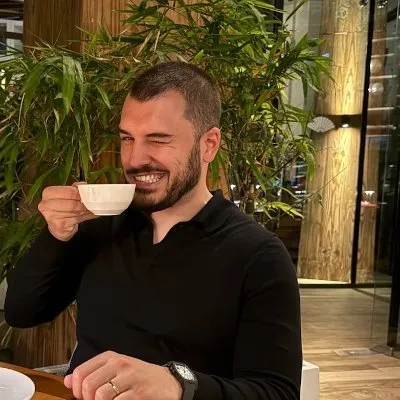Since generative artificial intelligence models like ChatGPT, Gemini or Claude slipped into the search habits of millions of users, digital marketing has reinvented itself... or at least, it has been full of acronyms: GEO, LLMO, GAIO, SGEO, AIO, SEO IA. So many attempts to name a real evolution... but not a revolution.
We see these terms flourish on LinkedIn, in agency decks, or in the slides of speakers looking for something new. However, one truth remains: All of this is still basically SEO, but adapted to a new context of use.
Generative AI is changing search... but not the goal of SEO
Since the end of 2022, millions of people have been asking their questions to AIs like ChatGPT rather than Google. These intelligences do more than just display a list of links: they synthesize, reformulate and respond directly, often by quoting sources in a more or less explicit manner.
This is profoundly changing the waybe visible on the web. We no longer just want to rank on the first page of Google. We want to be mentioned in the answers generated by an AI.
GEO, LLMO, GAIO, SGEO, AIO... What do these acronyms really mean?
Behind these technical names there are real nuances — but they all have a common basis: optimizing content for AI.
- GEO (Generative Engine Optimization) : it's the optimization of your content for generative response engines, like Perplexity or You.com.
- LLMO (Large Language Model Optimization) : it is a question of optimizing its presence in language models such as GPT-4, Claude or Gemini.
- GAIO (Generative AI Optimization) : a broader approach that includes content, prompts, formats, and structured data to be understood and used by AIs.
- SGEO (Search Generative Experience Optimization) : it is the AI part of the Google engine, which integrates the generation into its SERPs.
- AIO (AI Optimization) : a more vague term, often used to refer to all optimizations related to AI, SEO included.
All these concepts converge towards the same objective: ensure that your content is understood, selected, reformulated, and displayed in AI-generated responses.
The challenge is clear: to be cited, visible, understood
In traditional SEO, we aim for the right keyword, the right intention, and the right page. With generative AIs, we aim the right reformulation, the right synthesis, and above all, the right mention. LLMs will draw on millions of pieces of content to produce a fluid and credible response. If you are not in their attention spectrum... you disappear from the field of response.
This is why it is becoming strategic to create content:
- extremely clear, with simple sentences and specific ideas,
- structured, with tags, logical titles, short paragraphs,
- technically accessible, without JavaScript overload or pop-ups,
- and referenced elsewhere, because AIs rely on reputation, even when there is no connection.
What these acronyms change (and what they don't change)
The big news is not the discipline. It is The channel for the dissemination of knowledge. AI search engines don't rank pages. They are building answers. It's not an index, it's an interpretation.
The AIs include, they do not classify
Google is based on a system of scores, signals, and weights. ChatGPT, on the other hand, interprets your content as a piece of information among others, to be reused. It's no longer a battle of position, it's a Battle of perceived usefulness.
Les text mentions More than relationships
In this new world, a link is not mandatory. A simple coherent mention of your brand, company or tool, in various contexts, may be enough to enter the field of learning of an LLM.
The contents should be Chunkables
We are talking here about cuttable contents : lists, FAQs, tables, tables, definitions, information formats easily extracted. AIs love these structures. This doesn't kill storytelling, but it does require a new level of rigor in presentation.
We write for AIs and humans at the same time
In the past, we optimized for Google AND for the user. Today, we are writing for three targets : Google, generative AIs... and real humans. This involves taking care of both the content, the form, and the machine readability.
Don't worry: it's still SEO (just a bit smarter)
It is not a revolution in the fundamentals. The same skills are needed: writing good content, responding to an intention, structuring, optimizing technically, creating signals of trust. What is changing are tools, channels, formats, and priorities.
SEO professionals are already equipped to take up this challenge. But they need to broaden their scope of analysis. They can't just look at their Google locations anymore. They should also ask themselves: Am I included in the AI answers?
Ovirank: the solution designed to perform in SEO AI
It is precisely to respond to this new complexity that we designed Ovirank.
Ovirank allows you to:
- Follow your visibility into generative AI responses like ChatGPT, Perplexity, Gemini, Claude, etc.;
- Analyze which pages on your site are cited, ignored, or summarized ;
- detect the Prompts with high potential and the topics on which your competitors are mentioned;
- automatically generate articles optimized for Google AND for AIs ;
- publish this content directly on your site, without friction.
In 2024, Ovirank allowed its customers to attract more than 1 million qualified visitors by combining classic SEO and AI referencing. This is not a theoretical promise: it is a lever that is already activated, measurable, concrete.
Conclusion: AI or not, the challenge remains the same — to be where they are looking for you
GEO, LLMO, GAIO, AIO, AIO, SEO IA... These terms describe adaptations. Strategic adjustments to a world where drivers have become generative minds. But basically, the core of the subject remains the same: be found, understood, quoted, clicked, then chosen.
SEO is evolving. It is getting wider. It's getting more subtle. But it is still indispensable.
And with the right tools, the right reflexes and a strategy driven by the right data, you can dominate both Google... and the AIs.













































